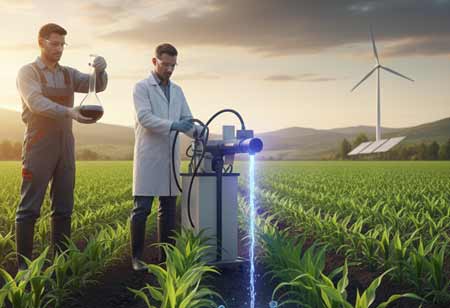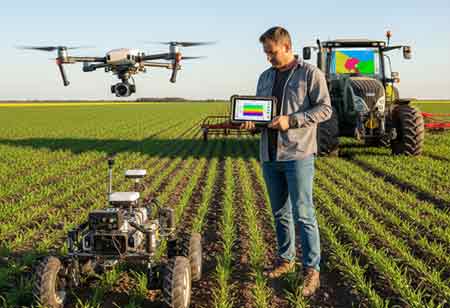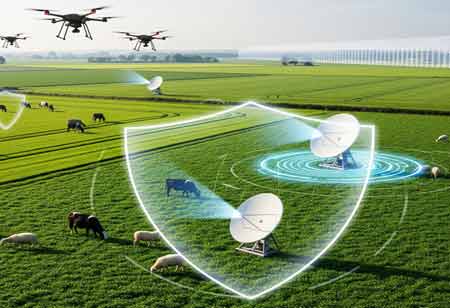Thank you for Subscribing to Agri Business Review Weekly Brief
Revitalizing Soil Health Through Advanced Plasma and Phosphate Fertilizer Solutions
Soil health is vital to agriculture, and innovative methods such as advanced phosphate fertilizers and plasma technology can enhance nutrient efficiency, sustainability, and crop resilience.

By
Agri Business Review | Thursday, October 30, 2025
Stay ahead of the industry with exclusive feature stories on the top companies, expert insights and the latest news delivered straight to your inbox. Subscribe today.
Fremont, CA: Soil is the cornerstone of agriculture, yet intensive farming practices have often led to its degradation. To ensure food security and environmental sustainability, a shift toward innovative soil revitalization strategies is critical. Two promising frontiers in this domain are the development of advanced phosphate fertilizer solutions and the application of plasma technology in agriculture.
Plasma Technology: A Non-Chemical Revolution
Plasma, often referred to as the fourth state of matter, is an energized gas composed of ions, electrons, and highly reactive species. In agriculture, Non-Thermal (Cold) Plasma offers a sustainable, chemical-free innovation for enhancing seed treatment and soil and water quality. The reactive oxygen and nitrogen species (ROS and RNS) generated by plasma—commonly in the form of Plasma-Activated Water (PAW)—are central to its agricultural benefits.
When plasma interacts with water and atmospheric nitrogen, it facilitates nitrogen fixation, converting atmospheric nitrogen into water-soluble forms such as nitrates. This process offers a clean, on-site alternative to conventional nitrogen fertilizers, effectively reducing reliance on the energy-intensive, emissions-intensive Haber–Bosch process. Plasma treatments also play a significant role in soil and water remediation, breaking down persistent organic pollutants, herbicides, and pesticides, thereby restoring soil health and improving water quality.
PAW has been shown to stimulate plant and seed development by enhancing germination rates, promoting stronger root growth, and improving resilience against abiotic stresses such as drought and salinity. By activating natural defense mechanisms and growth regulators, plasma-treated water not only strengthens plant vitality but also supports healthier root systems and improved nutrient absorption, leading to more resilient and productive agricultural ecosystems.
The Synergy for a Sustainable Future
The convergence of advanced phosphate solutions and plasma technology presents a transformative approach to sustainable agriculture. By integrating optimized nutrition and biological support, plasma technology can sustainably meet part of the soil’s nitrogen requirements. At the same time, engineered phosphate formulations deliver phosphorus efficiently, often in combination with beneficial soil microbes. This synergistic strategy minimizes dependence on excessive chemical inputs and enhances soil health. Moreover, plasma-induced improvements in root vigor and water absorption further amplify nutrient uptake efficiency. When combined with the high bioavailability of advanced phosphate fertilizers, these effects contribute to improved crop productivity and reduced environmental impact.
While plasma technology is still being scaled up for large-scale application, particularly regarding energy costs and optimal treatment parameters, its integration with precise, biologically active phosphate fertilizers holds the key to developing truly circular and resilient agricultural systems. The focus is shifting from simply feeding the plant to feeding the soil, restoring its biological and chemical balance for long-term productivity.





